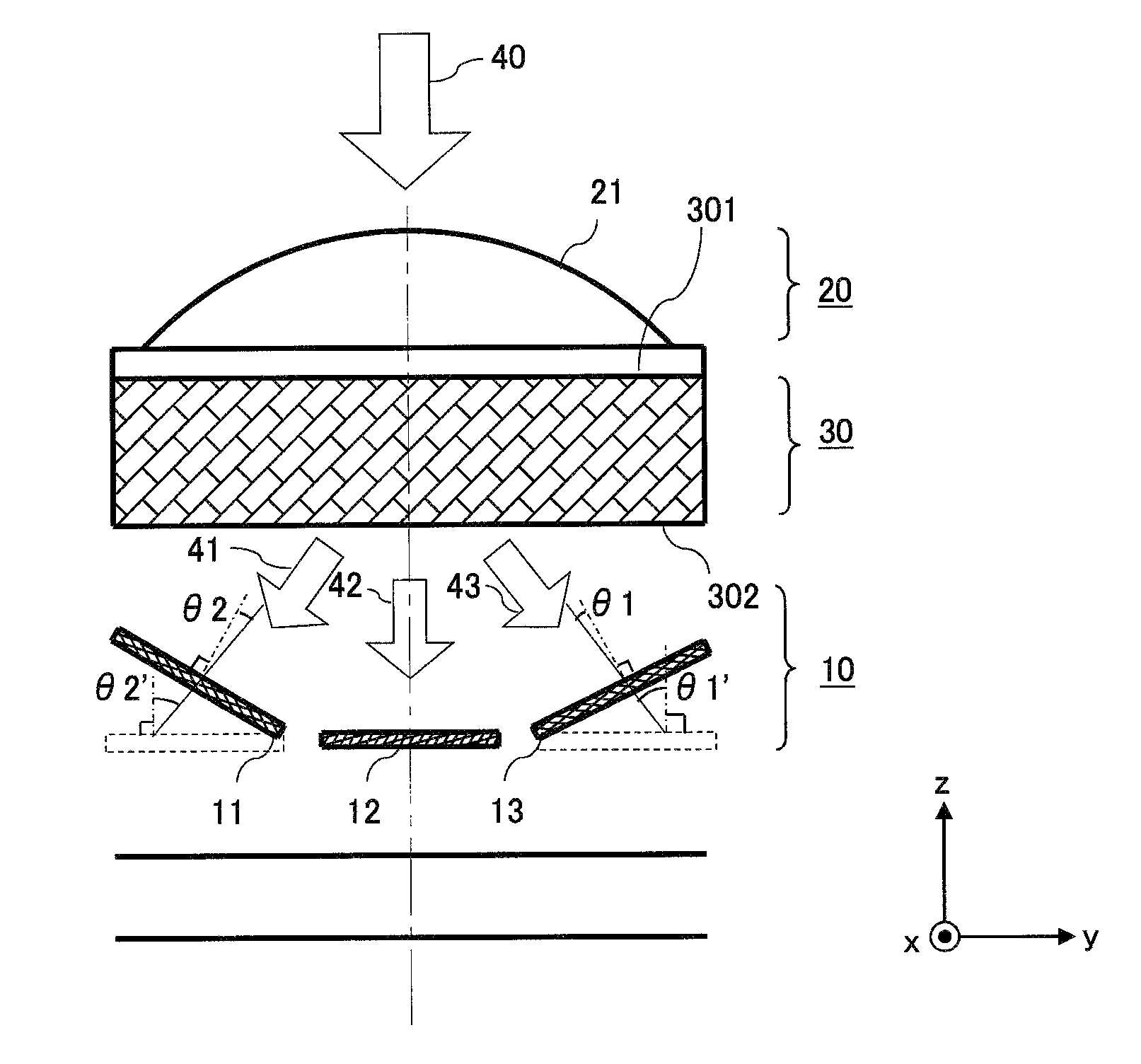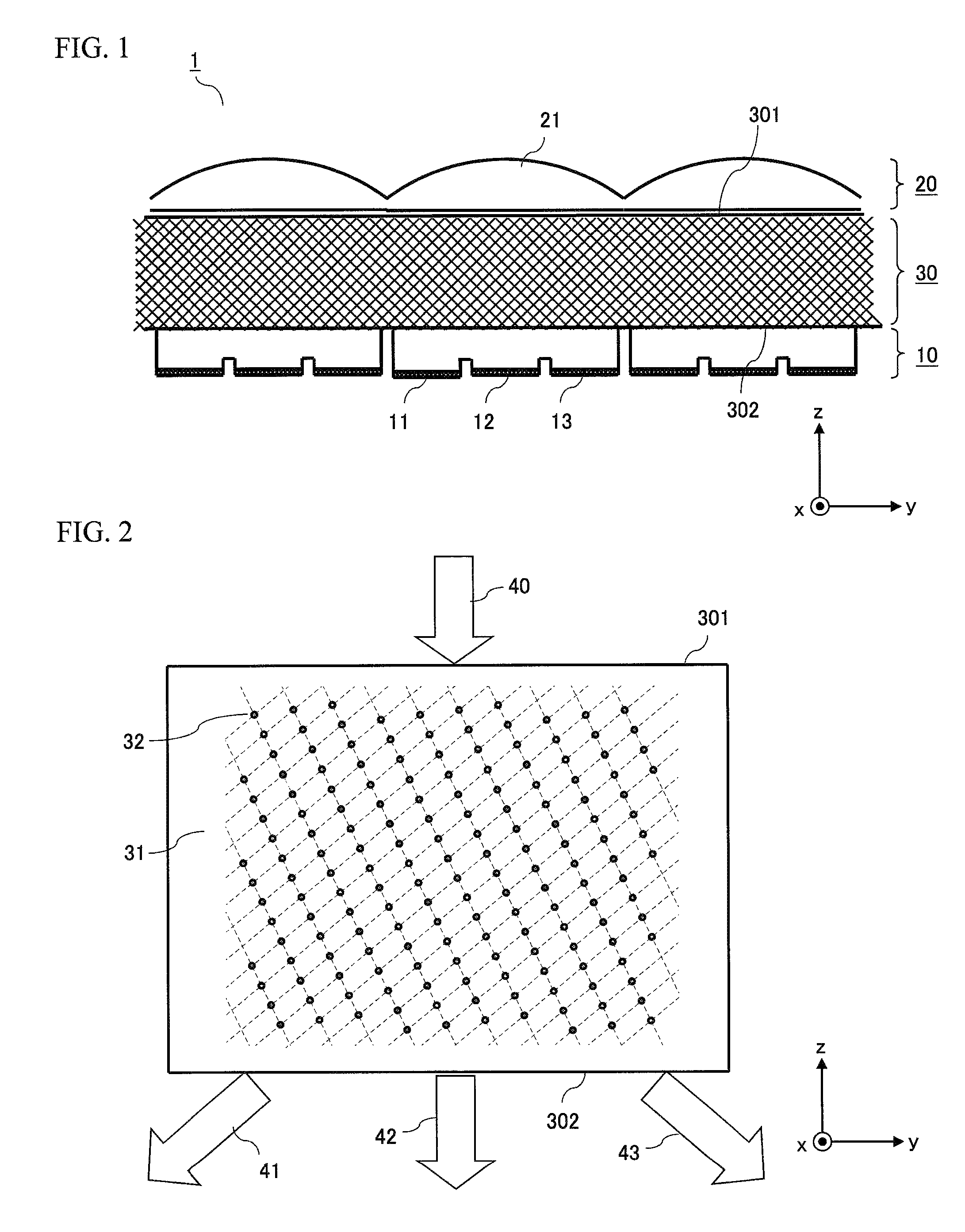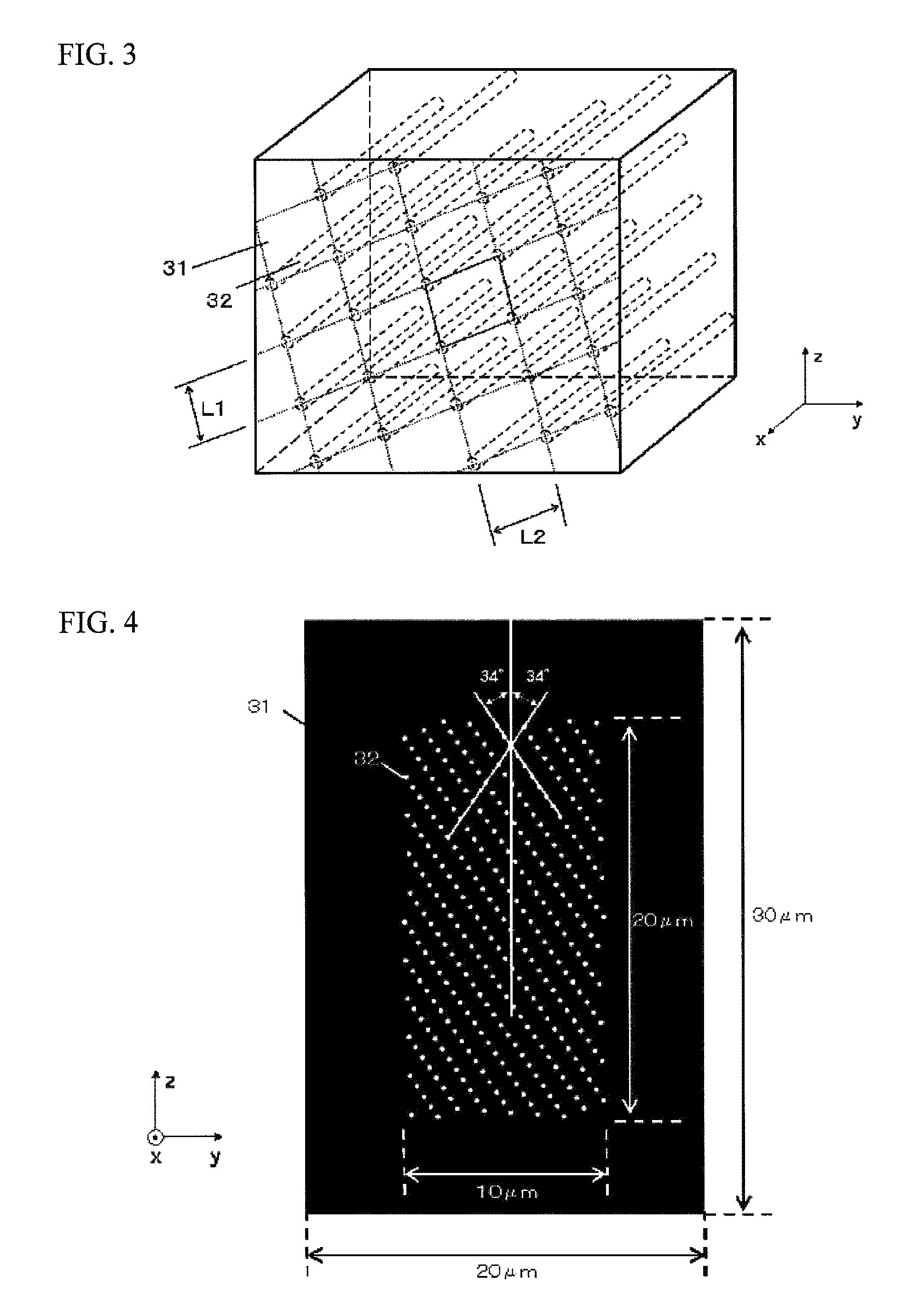Solid-state image pickup device, imaging device, and dispersing element
a solid-state image and imaging device technology, applied in the field of dispersing elements, can solve the problems of increasing the light receiving efficiency, the device cannot be applied to the dispersing element, and the amount of incident light is reduced, so as to achieve favorable image with stability, efficiently disperse backlight to different display pixels, and improve light utilization efficiency
- Summary
- Abstract
- Description
- Claims
- Application Information
AI Technical Summary
Benefits of technology
Problems solved by technology
Method used
Image
Examples
embodiment 1
[0035]FIG. 1 is a schematic configuration diagram illustrating a solid-state image pickup device according to a first embodiment. The solid-state image pickup device 1 mainly includes a photoelectric conversion unit 10 formed on a semiconductor substrate, a lens unit 20, and a dispersing element 30.
[0036]The photoelectric conversion unit 10 includes a plurality of light receiving regions two-dimensionally arrayed on an xy plane in FIG. 1. The photoelectric conversion unit 10 performs photoelectric conversion of light incident on each light receiving region, and outputs an electric signal according to the intensity of the incident light. More specifically, the photoelectric conversion unit 10 includes light receiving regions 11 for detecting green light, light receiving regions 12 for detecting red light, and light receiving regions 13 for detecting blue light. In the present embodiment, the light receiving regions 11, 12, and 13 are repeatedly arranged in this order. The electric si...
embodiment 2
[0051]FIG. 7 is a schematic configuration diagram illustrating a solid-state image pickup device according to a second embodiment. The following will mainly describe the difference between the present embodiment and the first embodiment.
[0052]In the first embodiment, the red light receiving region 12, the green light receiving region 11, and the blue light receiving region 13 have approximately the same area. In this case, the light receiving area for green light is reduced as compared to a solid-state image pickup device having ordinary RGB Bayer color filters.
[0053]So, in the present embodiment, the light receiving region 11 is increased relative to the light receiving regions 12 and 13 to increase the ratio of the light receiving area for green light. Thus, by varying the area of the light receiving region according to the colors, the balance among the amounts of the received beams of the respective colors can be appropriately set.
[0054]In the present embodiment, in order to incr...
embodiment 3
[0055]FIG. 8 is a schematic configuration diagram illustrating a solid-state image pickup device according to a third embodiment. The following will mainly describe the difference between the present embodiment and the first embodiment.
[0056]In the present embodiment, the light receiving surfaces of the green light receiving region 11 and the blue light receiving region 13 are inclined with respect to the incident surface of the dispersing element 30. Specifically, the light receiving surface of the light receiving region 13 is inclined so that an angle θ1 formed between the normal line of the light receiving surface of the light receiving region 13 and the light transmitted through the dispersing element 30 is smaller than an angle θ1′ in the case where the light receiving surface is not inclined. Likewise, the light receiving surface of the light receiving region 11 is inclined so that an angle θ2 formed between the normal line of the light receiving surface of the light receiving...
PUM
 Login to View More
Login to View More Abstract
Description
Claims
Application Information
 Login to View More
Login to View More - R&D
- Intellectual Property
- Life Sciences
- Materials
- Tech Scout
- Unparalleled Data Quality
- Higher Quality Content
- 60% Fewer Hallucinations
Browse by: Latest US Patents, China's latest patents, Technical Efficacy Thesaurus, Application Domain, Technology Topic, Popular Technical Reports.
© 2025 PatSnap. All rights reserved.Legal|Privacy policy|Modern Slavery Act Transparency Statement|Sitemap|About US| Contact US: help@patsnap.com



